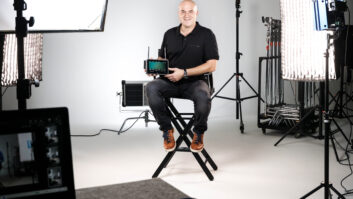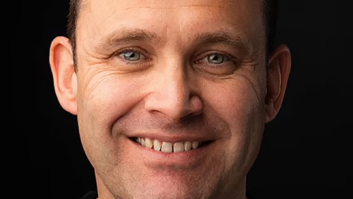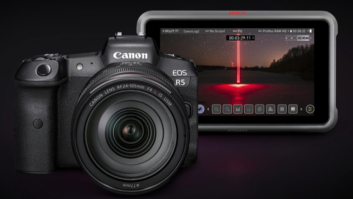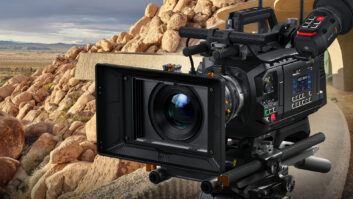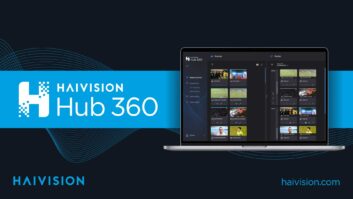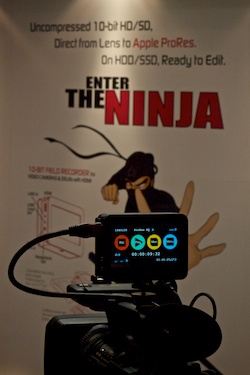
The Atomos Ninja HDMI ProRes recorder starts deliveries this week, and should be followed at NAB by a new HD-SDI version.
The finished Ninja had its first public showing at BVE 2011 in London last week. It seems to work well, with a very clear touchscreen user interface, and records 10-bit Apple ProRes files (in LT, 422 or HQ formats), which can be used directly in Final Cut Pro or most other non-linear editors running on the Mac, or on Windows if Apple’s ProRes QuickTime Application is installed. It costs €795/£695, and records to 2.5-inch laptop drives (which have to be bought separately). Atomos recommends Intel solid-state drives or Seagate and Hitachi for disk drives, after testing found them to be the most reliable.
The package comes with a carry case, two 2400 amp hour batteries, dual charger, two disk caddies, and a computer docking station with FireWire 800 and USB 3.0 ports.
The initial firmware doesn’t support recording in 25p or 30p, but Atomos’ CEO, Jeromy Young, promised that will arrive with the next firmware upgrade, scheduled for March 1. The frame rates aren’t part of the HDMI spec, so needed a little more work (they are output as double frames at 60 or 50fps, and the Ninja will then record just one of each pair). Young also promised that Atomos would deliver firmware upgrades every month and be responsive to any user requests.
The HDMI version won’t be suitable for everyone, as HDMI doesn’t transmit timecode (although some manufacturers have been discussing adding this to the HDMI specification), and isn’t as secure as the BNC connector used by HD-SDI. HD DSLRs and many lower-end cameras only have HDMI outputs, but for users who do have HD-SDI, Atomos promises a model with HD-SDI input, which should be on show at NAB and will be called the Samurai. For HDMI users, Atomos may soon have an answer to worries about the cable coming out, as it is working on an add-on cage that will restrain all of the cables and also add a side mounting bracket.
HD DSLR users had been hoping that the Ninja would allow them to record perfect uncompressed video via their HDMI ports, but some DSLRs won’t allow this, notably those from Canon. The video should still be uncompressed (so long as you don’t also record in camera at the same time on some models), but it won’t be perfect, as it seems that there is a white square or a red dot on the HDMI feed, which will be noticeable if you try to use it as full HD.
Atomos hadn’t detected it when they tested a Canon 7D initially as they shot some footage in a studio with a white background. It was only during beta testing that users spotted it, and further testing revealed the white square on the 7D and the red spot on other models.
However, users of other DSLRs, including those from Sony and Panasonic’s GH2, don’t seem to be affected. The Ninja also works perfectly with video cameras they’ve tested it with, such as the Panasonic AF101 and Sony’s F3. We also plugged it in to our Canon XF305 and it looked good. We were shooting a video (available on Vimeo) with Young, who demonstrated the operating system, all the controls, and what you get for your money.

